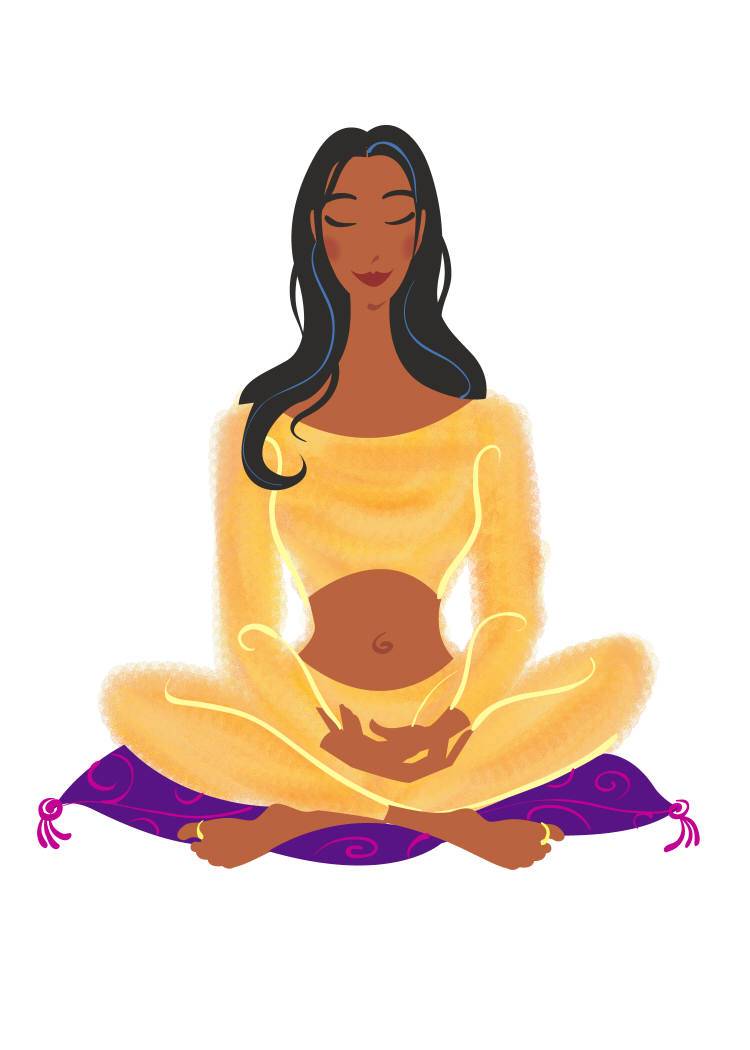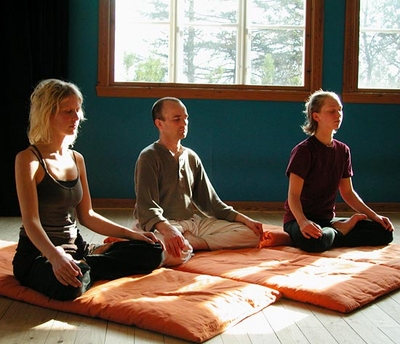Yoga and Meditation
 Yoga originated in India at least 7,000 years ago. A system of training for body, mind, and spirit, it aims to stimulate and balance the flow of life-force energy, known as prana, around the “subtle” body.
Yoga originated in India at least 7,000 years ago. A system of training for body, mind, and spirit, it aims to stimulate and balance the flow of life-force energy, known as prana, around the “subtle” body.
Yoga
The Sanskrit word yoga means “to join or merge”, and the practice of yoga aims to create balance between body, mind, and spirit. To achieve this, yoga teaches sequences of postures (asanas), as well as breathing, relaxation, and meditation techniques. Practiced regularly, yoga can increase flexibility and circulation, relieve stress, and encourage peace of mind.
According to the international research organization the Yoga Biomedical Trust, evidence shows that yoga helps overcome infertility and menstrual problems, possibly by a combination of increasing blood flow to the reproductive organs and relieving stress, which can help balance female hormones. It’s also thought to improve blood flow generally to the organs of the body and to be good for the heart. Several studies show that yoga can help balance hormones, relieve digestive disorders, and improve posture, strength, endurance, energy, immunity, sleep, and breathing. It’s no wonder that the practice is still gaining in popularity, thousands of years after its conception.
Practicing Yoga
The most wonderful thing about yoga is that no matter what your age or lifestyle, there’s a type to suit you. Visit your local yoga center and experiment until you find your perfect style. For example, if you’re new to yoga or recovering from an illness, it may be best to try a gentle style, such as Sivananda yoga (which includes a resting pose after each asana); or if you prefer something more dynamic, you might choose ashtanga yoga. Whichever style you go for, it’s often a good idea to have some guidance from a teacher at the beginning because he or she will show you how to hold the postures correctly and perhaps even tailor a program to your ability and level of fitness. Once you’ve mastered the basics, yoga is easy to practice by yourself.
One very important part of yoga practice, and available to us all, is pranayama – or breathing exercise. This is a sort of science of breath control. Practitioners believe that different methods of breathing affect the body by influencing the flow of prana. Pranayama also helps yoga practitioners prepare for another important aspect of yoga practice – meditation.
Discovering Meditation
The term meditation refers to a number of techniques intended to focus or control the mind so you can find a state of inner contentment – similar to the kind of feeling you get when you’re totally absorbed in what you’re doing and have lost track of time. Although its roots lie in yoga and esoteric religions, and to some people meditation might seem “alternative” or somehow intangible, in actual fact there are traditions of meditation in almost all cultures across the globe, and it can be a powerful tool for people from all walks of life.
Many people who practice meditation regularly say it eases stress and encourages relaxation and feelings of calmness and positivity. It also helps reduce blood pressure and improve circulation. One study in 2003 found that meditation could boost parts of the brain and enhance the immune system. Other research shows that it can ease a host of stress-related problems, including chronic pain, headaches, anxiety, PMS, sleep disorders – and even infertility because the stress of infertility can interfere with the release of the hormones that regulate ovulation.

Tips for successful meditation
Among the best mediation practices are simply to focus on your breathing or to relax every part of your body in turn. Alternatively, you might decide to turn your attention to a certain word or phrase that you keep in your mind’s eye – it could be “peace” or “calm” – or you might hold an image of a serene or happy place in your mind to focus upon. You could have an actual visual focus – a candle flame, a flower, or a mandala (a geometric diagram, used in Buddhism). The point is to focus your attention, let go of stressful thoughts, and find a state of inner peace.
The best time to meditate is first thing in the morning or just before you go to bed at night, and at least two hours after a meal. If you’re new to meditation, start by practicing in short, regular sessions – say ten to 20 minutes a day – which you build up gradually, until you’re able to meditate, without losing your focus, for approximately an hour. Try to differentiate your meditation time by going to a particular room, or perhaps by simply imagining that you’re inside a bubble that blocks out all distraction. You might even decide that you need to go to a meditation class at first. The important thing is to switch your mind into a different state from the busy, frantic state of the normal day. Sit in a comfortable position that will enable you to keep still (don’t lie down as you might fall asleep) and keep your spine straight.
A simple meditation on the breath
If you’re new to meditation – or even if you aren’t! – use this exercise to get you started. Try to practice it for five minutes, twice a day, every day. When you feel confident, extend the sessions by five minutes every other day until you are doing around 20 minutes twice a day. You can make the meditation more personal, too – rather than your breath, choose a word or a phrase as your focus, or a positive image that you hold in your mind’s eye.
1. Find a quiet place where you know you won’t be distracted, and turn off your phones. Sit on the floor, or use a chair if it’s more comfortable (but keep your feet flat on the floor). Close your eyes.
2. Gently and slowly begin to take deep breaths. Breathe in through your nose for a slow count of three and out through your mouth for a slow count of three. Continue to do this until the long, slow breaths feel completely natural and rhythmical.
3. Now concentrate on the flow of air past your nostrils as you breathe in and against your lips as you breathe out. As thoughts come into your mind, don’t’ ignore them – instead, simply observe them and then let them go. This may seem hard at first, but the technique will get easier with practice.

